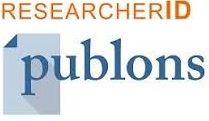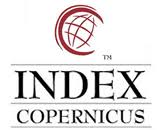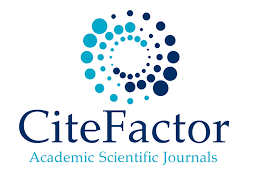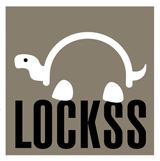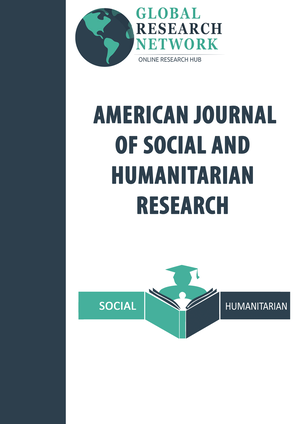Scholastic Performance Among Senior High School Students In Distance Learning During The Covid-19 Pandemic
Abstract
This study essentially made use of a descriptive-correlation design where it attempted to measure the Scholastic performance of Senior High School students in distance learning through a virtual set-up. A descriptive survey was used to describe the profile of the respondents in terms of age, sex, birth order of siblings in the family, parents' highest educational attainment, parents’ occupation, family monthly income, and gadget/s used in online learning. A test of correlation was conducted to analyze the Home Environment, Parental Educational background, Socioeconomic status, Teacher factor, Technology resources, and Learning. The name of the program is “Future Ready, Future Smart,” commonly known as the FRFS Program, wherein the students learn by using the Study Guides (modules) and Video Lectures provided to them by their learning facilitator. In order to ensure the bridging of the learning gaps, Good Samaritan Colleges-Senior High School also requires the students to attend their Virtual Classes.
Considering the results, fifty-nine percent (59%) of the respondents belong to the eighteen (18) to nineteen (19) age bracket. This age group represents those students in Senior High School or those in Grades 11 and 12, which belongs to Generation Z. Sixty-four percent (64%) of the respondents represented Female students. Females are known to mature faster than males as they undergo puberty and finish it earlier. Also, they usually spend more time doing homework than boys. Forty-six (46%) students are firstborns. Firstborns are expected to lead and take care of their siblings so they are usually responsible and reliable. Fifty-seven percent (57%) of the parents of the respondents are college graduates. By reaching a higher level of education, the parents can guide their children in their studies and be examples/role models in attaining their goals in life. Fifty-six percent (56%) of the parents of the respondents have a various occupation, such as government and private company employees, farmers, policemen, welders, lawyers, and drivers. This shows that their parents came from all walks of life. A family of thirty-eight percent (38%) of the respondents earn twenty-five thousand pesos (P25,000) and above per month. These families may be classified as middle-income class families. Forty-nine percent (49%) of the respondents use laptops in their online classes; Laptop, although generally more expensive, is more convenient to use in online classes. Being able to provide a better gadget to be used in their children’s online studies may be attributed to the parents having an occupation.
It just shows that there is a significant relationship between the Parents’ Highest Educational Attainment and the Academic Performance of the respondents for School Year 2020-2021 only; and between the Learning Style and the Academic Performance of the respondents for School Year 2019-2020 only. The rest has no significant relationship with the Academic Performance of the respondents for School Year 2019-2020, School Year 2020-2021, and School Year 2021-2022.
Keywords
Full Text:
PDFReferences
. Adedoyin, O. B., & Soykan, E. (2020). COVID-19 pandemic and online learning: the challenges and opportunities. Interactive Learning Environments. https://www.tandfonline.com/
. Alexander K., Pitcock S., & Boulay M. C. (Eds.). (2016). The summer slide: What we know and can do about summer learning loss. https://scholar.google.com/
. American Academy of Pediatrics (2020). COVID-19 planning considerations: guidance for school re-entry. Critical Updates on COVID-19. https://services.aap.org/
. American Educational Research Association, American Psychological Association, National Council on Measurement in Education, Joint Committee on Standards for Educational, & Psychological Testing (US). (2014). Standards for educational and psychological testing. https://scholar.google.com/
. Barbour, M. K., & Cooze, M. (2004). All for one and one for all: Designing web-based courses for students based upon individual learning styles. Staff and Educational Development International, 8(2/3), 95-108.
. Barbour, M. K. (2007). What are they doing and how are they doing it? Rural student experiences in virtual schooling. Unpublished dissertation, University of Georgia.
. Barbour, M. K. (2007b). Teacher and developer perceptions of effective web-based design for secondary school students. Journal of Distance Education, 21(3), 93-114. Retrieved from http://www.jofde.ca/index.php/jde/article/view/30
. Barbour, M. K. (2005). The design of web-based courses for secondary students. Journal of Distance Learning, 9(1). 27-36.
. Barker, K., & Wendel, T. (2001). E-learning: Studying Canada’s virtual secondary schools. Kelowna, BC: Society for the Advancement of Excellence in Education.
. Barman, C., Stockton, J., Ellsworth, M., Gonzales, C., Huckleberry, T., & Raymond, S. (2002). Evaluation of the soar-high project: A Web-based science program for deaf students. American Annals of the Deaf, 147(3), 5–10.
. Bernard, R. M., Abrami, P. C., Lou, Y., Borokhovski, E., Wade, A., Wozney, L., Wallet, P. A., Fiset, M., & Huang, B. (2004). How does distance education compare with classroom instruction? A metaanalysis of the empirical literature. Review of Educational Research, 74(3), 379–439.
. Betebenner, D. & Van Iwaarden, A. (2020). Issues and considerations that the COVID‐19 pandemic presents for measuring student growth. https://www.nciea.org/
. Brookhart, S., & Nitko, A. (2019). Educational assessment of students (8th ed.). https://scholar.google.com/
. CAST. (2020). About universal design for learning. http://www.cast.org/
. Castelo, M. (2020). How K‐12 schools are doing summer school virtually. EdTech: Focus on
. K‐12. https://edtechmagazine.com/
. C. Glavin. (2014). “Education in the United States | K12 academics,”. http://www.k12academics.com.
. Carillo, C., & Flores, M. (2020). COVID-19 and teacher education: a literature review of online teaching and learning practices. https://www.tandfonline.com/
. Cavanaugh, Cathy; Gillan, Kathy Jo; Kromrey, Jeff; Hess, Melinda; Blomeyer, Robert
. “The Effects of Distance Education on K-12 Student Outcomes: A Meta-Analysis” https://eric.ed.gov/
. Cavanaugh, C., Bosnick, J., Hess, M., Scott, H., & Gillan, K. (2005). Succeeding at the gateway: Secondary algebra learning in the virtual school. Unpublished manuscript.
. Cavanaugh, C., Gillan, K., Kromrey, J., Hess, M., & Blomeyer, R. (2004). The effects of distance education on K–12 student outcomes: A meta-analysis. Naperville, IL, Learning Point Associates. Retrieved from http://www.ncrel.org/tech/distance/k12distance.pdf
. Chalak, A., & Tavakoli, M. (2010). Sources of test score pollution: State of the art. Curriculum Planning Knowledge & Research in Educational Sciences. https://scholar.google.com/
. Chen, C., Toh, S., & Ismail, W. (2005). Are learning styles relevant to virtual reality? Journal of Research on Technology in Education, 38(2), 123–140.
. Cizek, G. J. (2009). Reliability and validity of information about student achievement: Comparing large‐scale and classroom testing contexts. Theory into Practice. https://scholar.google.com/
. Clark, T., Lewis, E., Oyer, E., & Schreiber, J. (2002). Illinois Virtual High School Evaluation, 2001-2002. Retrieved from http://www.ivhs.org/index.learn?action=other#year1evaluation
. Cooper, H., Nye, B., Charlton, K., Lindsay, J., & Greathouse, S. (1996). The effects of summer vacation on achievement test scores: A narrative and meta‐analytic review. Review of Educational Research. https://scholar.google.com/
. Cooze, M., & Barbour, M. K. (2007). Learning styles: A focus upon e-learning practices and pedagogy and their implications for successful instructional design. Journal of Applied Educational Technology, 4 (1). Retrieved from http://www.eduquery.com/jaet/JAET4- 1_Cooze.pdf
. D. Beveridge, M. McKenzie, K. Aikens, and K. Strobbe. (2019). “A national census of sustainability in K-12 education policy: implications for international monitoring, evaluation, and research.”. https://scholar.google.com/
. DeWitt, P. (2020). Teachers work two hours less per day during COVID‐19: 8 key EdWeek survey findings. Education Week. https://www.edweek.org/
. Dibner KA, Steingraber HA, Christakis DA. (2020). Reopening K-12 schools during the COVID-19 pandemic: a report from the National Academies of Sciences, Engineering, and Medicine. https://jamanetwork.com/
. Ebel, R. L., & Frisbie, D. A., (1991). Essentials of educational measurement (5th ed). Englewood Cliffs, NJ: Prentice Hall. https://scholar.google.com/
. Florida Virtual School. (2018). Transforming Education Worldwide–One Student at a Time: Annual Report 2017-18. https://www.flvs.net/
. International Journey of Philosophy. (2021). EDUCATION: RE-EXAMINED IN TIME OF PANDEMIC. https://ejournals.ph/
. G. Adarlo and L. Jackson. (2017). “For whom is K-12 education: a critical look into twenty-first century educational policy and curriculum in the Philippines,” in Proceedings of the Educating for the 21st Century. https://scholar.google.com/
. Goertz, M. E., Oláh, L. N., & Riggan, M. (2009). From testing to teaching: The use of interim assessments in classroom instruction. https://repository.upenn.edu
. H. Yazdi. (2008). “Education and literacy in Afghanistan: lessons of history and prospects for change,” https://scholar.google.com/
. Harvey D, Greer D, Basham J, Hu B. (2014). From the student perspective: experiences of middle and high school students in online learning. https://scholar.google.com/
. Haladyna, T. M., Nolen, S. B., & Haas, N. (1991). Raising standardized achievement test scores and the origins of test score pollution. https://scholar.google.com/
. Hammond, B. (2020, June 10). Risks, costs and goals of summer school in Oregon during coronavirus. https://www.opb.org/
. Herold, B., & Yettick, H. (2020, May). This is what teachers want us to now about pandemic earning. https://www.edweek.org/
. Iga Setia Utami, SHS Web Conferences. (2018). “The Effect of Blended Learning Model on Senior High School Students’ Achievement” https://www.shs-conferences.org/
. J. G. Rivera. (2017). “Articulating the foundations of Philippine K to 12 curriculums: learner-centeredness,”. https://scholar.google.com/
. Kerry, T., & Davies, B. (1998). Summer learning loss: The evidence and a possible solution. Support for Learning. https://scholar.google.com/
. L. Johnson, D. Liu, R. Huang et al. (2016). NMC Technology Outlook: Chinese K-12 Education, https://scholar.google.com/
. Lee, Y., Malcein, L., & Kim, S. C. (2021). Information and Communications Technology (ICT) Usage during COVID-19: Motivating Factors and Implications. https://www.mdpi.com/
. Loeb, Susanna (March 2020). How Effective Is Online Learning? What the Research Does and Doesn’t Tell Us. https://www.edweek.org/
. M. M. Hynes, C. Mathis, S. Purzer, A. Rynearson, and E. Siverling. (2017). “A systematic review of research in P-12 engineering education from 2000–2015,” https://scholar.google.com/
. Maas, C. J., & Hox, J. J. (2005). Sufficient sample sizes for multilevel modeling. Methodology. https://scholar.google.com/
. Messick, S. (1984). The psychology of educational measurement. Journal of Educational Measurement. https://scholar.google.com/
. Michigan Virtual Learning Research Institute. (2020). Parent guide to online learning. https://michiganvirtual.org/
. Molnar A, Miron G, Elgeberi N, et al. (2019). National Education Policy Center; 2019. https://scholar.google.com/
. Moore-Adams BL, Jones WM, Cohen J. (2016). Learning to teach online: a systematic review of the literature on K-12 teacher preparation for teaching online. https://scholar.google.com/
. Murphy, E., & Coffin, G. (2003). Synchronous communication in a Web-based senior high school course: Maximizing affordances and minimizing the constraints of the tool. The American Journal of Distance Education, 17(4), 235–246.
. Olina, Z., & Sullivan, H. J. (2002). Effects of classroom evaluation strategies on student achievement and attitudes. https://scholar.google.com/
. Paul, Jasmine & Jefferson, Felicia. (2019). A Comparative Analysis of Student Performance in an Online vs. Face-to-Face Environmental Science Course From 2009 to 2016. https://www.frontiersin.org/
. Pulham E, Graham CR. (2018). Comparing K-12 online and blended teaching competencies: a literature review. https://scholar.google.com/
. Read, D. (2020). Embracing online teaching during the COVID‐19 pandemic. https://www.ecampusnews.com/
. S. Kucuk, M. Aydemir, G. Yildirim, O. Arpacik, and Y. Goktas. (2013). “Educational technology research trends in Turkey from 1990 to 2011,” https://scholar.google.com/
. Shachar, M., & Neumann, Y. (2003). Differences between traditional and distance education academic performances: A meta-analytic approach. International Review of Research in Open and Distance Education, 4(2).
. Schwartz, S. (2020). Teacher appreciation week wrap‐up: See how educators are innovating during COVID‐19. https://www.edweek.org/
. Digital Learning Collaborative. (2019). Snapshot 2019: A Review of K-12 Online, Blended, and Digital Learning. https://static1.squarespace.com/
. Tarkar, P. (2020). Impact Of COVID-19 Pandemic on Education System. https://www.researchgate.net/
. Ungerleider, C., & Burns, T. (2003). A systematic review of the effectiveness and efficiency of networked ICT in education: A state of the field report. Council of Ministers Canada and Industry Canada. Ottawa: Industry Canada.
. Tornay, K. (2020). Medford summer school expands after vulnerable students struggle with distance learning. https://mailtribune.com/
. Y. J. Joo, K. Y. Lim, and N. H. Kim. (2016). “The effects of secondary teachers’ technostress on the intention to use technology in South Korea,”. https://scholar.google.com/
. Zucker, A. (2005). A study of student interaction and collaboration in the virtual high school. In R. Smith, T. Clark, & B. Blomeyer (Eds.), A synthesis of new research in K–12 online learning (pp. 43-45). Naperville, IL: Learning Point Associates.
. Zucker, A., & Kozma, R. (2003). The virtual high school: Teaching generation V. New York: Teachers College Press.
. Zughoul, O., Momani, F., Almasri, O., Zaidan, A., Zaidan, B., Alsalem, M., Albahri, O., Albahri, S. & Hashim, M. (2018). Comprehensive insights into the criteria of student performance in various educational domains. https://scholar.google.com/
DOI: http://dx.doi.org/10.52155/ijpsat.v49.1.6999
Refbacks
- There are currently no refbacks.
Copyright (c) 2025 Richard Agustin Cribello

This work is licensed under a Creative Commons Attribution 4.0 International License.








